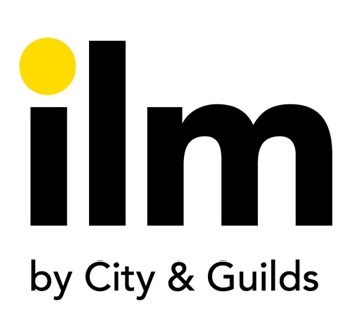Troubleshooting of Electrical Equipment and Control Systems
| Start Date | End Date | Venue | Fees (US $) | ||
|---|---|---|---|---|---|
| Troubleshooting of Electrical Equipment and Control Systems | 01 Feb 2026 | 05 Feb 2026 | Jeddah, KSA | $ 4,500 | Register |
| Troubleshooting of Electrical Equipment and Control Systems | 05 Jul 2026 | 09 Jul 2026 | Kuala Lumpur, Malaysia | $ 4,500 | Register |
| Troubleshooting of Electrical Equipment and Control Systems | 15 Nov 2026 | 19 Nov 2026 | Dubai, UAE | $ 3,900 | Register |

Troubleshooting of Electrical Equipment and Control Systems
| Start Date | End Date | Venue | Fees (US $) | |
|---|---|---|---|---|
| Troubleshooting of Electrical Equipment and Control Systems | 01 Feb 2026 | 05 Feb 2026 | Jeddah, KSA | $ 4,500 |
| Troubleshooting of Electrical Equipment and Control Systems | 05 Jul 2026 | 09 Jul 2026 | Kuala Lumpur, Malaysia | $ 4,500 |
| Troubleshooting of Electrical Equipment and Control Systems | 15 Nov 2026 | 19 Nov 2026 | Dubai, UAE | $ 3,900 |
Introduction
Accurate troubleshooting and subsequent repair of electrical equipment is necessary in today’s sophisticated industrial environments to ensure continued efficient operation and productivity of the equipment. Delegates are encouraged to raise queries both during and at any time after attending the course. Delegates are also encouraged to bring any specific issues that they may wish to raise to this course.
Objectives
- To develop a structured approach to electrical troubleshooting using common terminology and to provide troubleshooting methods and solutions for various electrical equipment and control systems problems.
- To develop a better understanding of various test equipment used in electrical troubleshooting.
- To develop a better understanding of various electrical equipment and control systems design, functionality and failure modes.
- To better understand work practices, which allow for successful troubleshooting including job plans.
- To provide examples of successful troubleshooting techniques and ‘hands on’ experiences plus case studies and group problem solving exercises.
- To provide troubleshooting methods and solutions for various electrical equipment and control systems problems.
Training Methodology
The training methodology is interactive with group exercises and is suitable for all employees involved in functions management. The pace and level of the training workshop is customized to the understanding of the delegates. Ongoing back-up and support is available after the training on request to the supplier, and the training course is also available for in-house presentation as well as for “Competency Transfer”.
Organizational Impact:
Following the attendance at this course, participants will return to their respective organizations equipped with new skills and knowledge to enable them to more effectively trouble shoot and repair failed electrical equipment.
This in turn will reduce down time, improve equipment availability and reliability and allow the transfer of these skills to the participant’s co-workers.
Personal Impact
On successful completion of this course, participants will have:
- a better understanding of troubleshooting procedures
- an improved capability in the use of test equipment
- an understanding of the importance of logical and timely attendance to electrical problems through the use of troubleshooting procedures
- a better understanding of failure modes and failure analysis
- an improved awareness of the safety concerns associated with electrical apparatus
- What the Participant will learn (Competencies)
- the ability to comprehend the 5 basic steps of formal troubleshooting
- the ability to identify and work with electrical safety hazards
- the ability to understand and interpret test equipment data
- the ability to develop troubleshooting job plans
- the experience of exchanging ideas, problems and solutions with the other delegates
- the improved ability to read and understand electrical and process drawings
Who Should Attend?
This course is intended for Electrical Maintenance Engineers, Supervisors and Technicians working in maintenance related roles who need either a greater awareness of, or to become more proficient in, the troubleshooting of electrical equipment and control systems and electrical maintenance activities. Because the methods and examples are generic, personnel from all industries will benefit.
Course Outline
The Technology Of Electrical Equipment
Definitions and descriptions of electrical equipment used in industrial applications including:
Source Equipment – transformers
- power supplies (UPS)
- batteries
- generators
Switching Equipment – switchgear
- motor control centre (MCC)
- disconnects
- contactors
- overload relays
- starters
- neutral ground resistors (NGR)
Control Equipment – variable frequency drives (VFD)
- programmable logic controllers (PLC)
- distributed control systems (DCS)
- power monitoring and control
- relays and timers
- limit switches
- temperature switches
- pressure switches
- level switches
- speed switches
- vibration switches
- safety and shutdown switches
- motor/feeder protective devices
Load Equipment – motors (AC induction, asynchronous, DC)
- heaters
- solenoids
- valve actuators
- signaling and alarm devices
Troubleshooting Applicable To The Above List
- methods
- terminology
- principles
- special techniques
Test Equipment
- digital volt meter (DVM)
- oscilloscope or oscillograph
- megger
- hi-pot tester
- frequency meter
- ammeter (inline, clamp-on)
- power meter (watt, VAR)
- current transformer
- specialised equipment
Typical Problems/Failures
- common mode failures
- phase imbalance
- contact pitting/arcing
- electronic control component failure
- blown fusing
- damaged windings
- worn bearings
- damaged brushes
- burnt ballasts
- damaged excitation circuits
- battery cell failure
- inverter/rectifier failure
- high voltage bushing failure
- switch failure
- ground fault
Typical Troubleshooting Job Plan Development
- identify troubleshooting step sequence
- prepare procedures
- documentation
- follow-up
- regulatory requirements
- training
Typical Electrical Drawings and Symbols
- single line
- control wiring
- distribution
- symbols



















